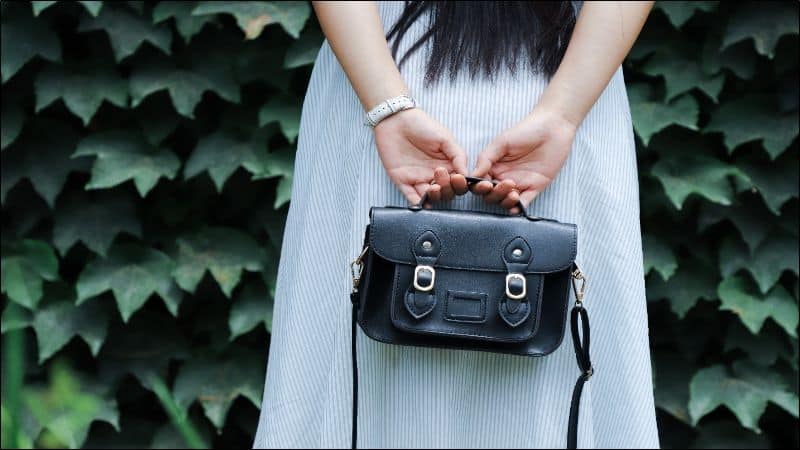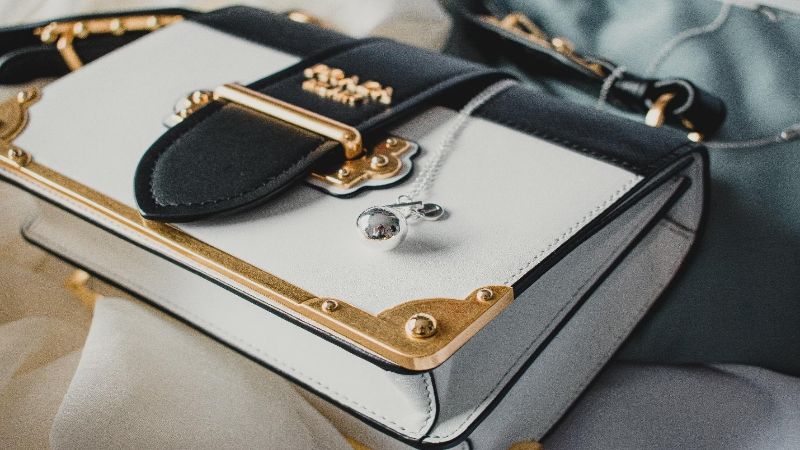Ever found yourself tugging at a stubborn handbag zipper, only to have it jam or come off in your hand? It’s frustrating when a favorite accessory is sidelined by something as small as a zipper. But don’t worry, you’re not alone in this, and more importantly, you don’t have to say goodbye to your beloved bag just yet.

With a little know-how and the right tools, you can breathe new life into your handbag. Whether it’s a stuck slider, missing teeth, or a broken pull, fixing a zipper might be easier than you think. In the next few minutes, you’ll discover simple steps to get your zipper gliding smoothly again.
Assessing the Problem
When you’re confronted with a faulty handbag zipper, your first move should be a thorough assessment. Grab a magnifying glass if you have one and inspect closely. Check for obstructions like fabric or lining caught in the teeth. If you spot something, gently pry it out using tweezers.
Examine the teeth next. Are they bent or missing? Misaligned or damaged teeth can often be the culprits behind zipper malfunction. A simple trick is to try realigning them with a pair of needle-nose pliers. Be gentle; you don’t want to cause more damage.
The slider is another key player in zipper functionality. Sliders can wear out or break, causing your zipper to open or get stuck. If the slider doesn’t move, check for bends or breaks. Sometimes the pull tab is missing, making it tough to glide the slider. Don’t worry—you can loop a paperclip through as a temporary fix.
Lastly, consider the zipper stop at the end of the track. If it’s come loose or fallen off, this can be why your zipper won’t close. Zipper stops are essential for keeping the slider from coming off the track, so you’ll need to address this if there’s an issue.
Remember:
- Remove obstructions carefully
- Align bent teeth gently with pliers
- Inspect the slider for wear or breakage
- Check the zipper stop for damage
By systematically inspecting each component, you’ll pinpoint the problem. Once you’ve identified the issue, the real work begins: the repair. Repairing your own handbag can be a rewarding experience—you’ll not only save money but also give your beloved accessory a new lease on life. Keep reading to learn about the tools you’ll need and the steps to follow for a successful fix.
Gathering the Right Tools
Before you start mending your handbag zipper, make sure you’re armed with the proper tools. This’ll not only ease the process but also keep your beloved accessory from further damage. You wouldn’t want a quick fix to turn into a fashion disaster, would you?
Basic Tools You’ll Need:
- Pliers: For realigning bent teeth and slider.
- Needle-nosed pliers: To access tight spaces.
- Scissors: For trimming threads or cloth caught in the zipper.
- Waxed dental floss: As a strong, temporary stitching material.
- Sewing kit: Includes needles and thread for sewing fabric or stops.
If the slider is the culprit and you’re looking at a replacement job, a zipper repair kit is your go-to resource. These kits typically include various sliders, stops, and other specialized tools, making it a worthy investment for your future fashion emergencies.
Advanced Tools For Professional Repairs:
- Zipper foot for your sewing machine: Allows precision sewing close to the zipper teeth.
- Replacement zipper tape: In case you need to replace the entire zipper, make sure the color and size match.
Fixing a Stuck Slider
When you’re dealing with a slider that won’t budge, don’t panic. Your handbag’s life isn’t over. There’s likely a simple problem causing the jam. First, check for fabric or lining caught in the slider. Visible obstructions can be gently pulled away using tweezers. Take care not to tug too hard to avoid ripping the material.
If everything looks clear and your slider’s still stuck, it’s time to consider lubrication. Household items like waxed dental floss or soap can work wonders. Run the floss back and forth through the slider or rub a bar of soap onto both sides of the teeth. This should reduce friction and help the slider glide more freely. After applying any lubricant, work the slider up and down gently to distribute it evenly.
Sometimes the issue isn’t an obstruction or a lack of lubrication. You could be dealing with a misaligned slider. Gently pinch both sides of the slider with a pair of needle-nosed pliers. Apply just enough pressure to straighten it out but be careful not to make the slider too tight. It should fit snugly against the zipper teeth but still move smoothly.
Even with these efforts, sliders can sometimes be stubborn. If yours still isn’t moving, consider checking the zipper teeth for any subtle misalignments or damage. Straighten bent teeth with pliers and remove any buildup of grime or rust.
If you’ve tried these tips and the slider still won’t move, you may need a replacement. A zipper repair kit can help. It contains various slider sizes, and you’ll select one that matches your handbag’s existing hardware. Re-thread the new slider onto the zipper tape, ensuring it’s facing the right direction. Secure it in place by replacing the zipper stop at the end of the track.
Remember, while force might be tempting, always attempt adjustments with a gentle touch. Aggressive moves can turn a fixable problem into a ruined zipper.
Replacing Missing Teeth
Sometimes a zipper snag isn’t about a misalignment or a stuck slider—it’s missing teeth. Without all its teeth, your zipper won’t close correctly. Here’s how to tackle this problem.
« Can Handbags Be Dry Cleaned? Expert Tips for Safe Accessory Care
Why Do Ladies Carry Handbags? Unveiling their Fashion & Function Secrets »
Check the Extent of Damage before jumping in. If you’re missing a single tooth, that’s an easier fix than multiple teeth. For a lone missing tooth near the bottom of the zipper, your handbag may still function with a temporary solution. But if it’s at the top or multiple teeth are gone, you’ll likely need a full replacement.
Securing a Temporary Fix
- Use pliers to remove any protruding remains of the lost tooth to prevent further damage.
- Apply clear nail polish or superglue to the affected area. This will temporarily hold the zipper together.
- Strategic stitching can also help. Use a needle and strong thread to create small stitches where the tooth was. This won’t replace the tooth but may allow the zipper to function for a short time.
Moving to a more permanent fix, you’ll need a zipper repair kit. These kits come equipped with various zipper teeth sizes.
Installing New Teeth
- Select the right size matching your handbag’s original teeth.
- Follow the instructions included with the repair kit to attach the new tooth. Typically, this involves slipping the tooth over the fabric and clamping it down with pliers.
Testing Your Repair
After replacement, gently zip and unzip a few times to ensure the new tooth is securely in place and that the slider moves smoothly over it. If it doesn’t, adjustments may be necessary. Remember, always work gently to safeguard the integrity of your handbag’s material. Keep your repair kit handy for future issues, as zippers can be unpredictable.
In the case of multiple missing teeth or if you’re uncomfortable attempting the replacement yourself, seek a professional repair service. They have the tools and expertise to ensure your handbag’s longevity.
Repairing a Broken Pull
When your handbag’s zipper pull snaps off, it can feel like a major inconvenience. But don’t worry, you’ve got this. The right approach can get your zipper functioning in no time.
First, determine if the pull needs to be replaced or reattached. If it’s simply come loose, you may be able to fix it without needing new parts. Grab a pair of pliers and gently clamp the pull back onto the slider. Ensure it’s secure, but be careful not to clamp down too hard as this could warp the pull.
If the pull is broken, you’ll have to replace it. Zipper pulls are readily available online or at your local craft store. Choose one that matches the size and style of your zipper for the best look and functionality. Using pliers, remove any remnants of the old pull from the slider. Then thread the new pull into place, using a paperclip or a specialized tool if necessary.
Sometimes, the slider itself is the issue, not the pull. If the slider feels loose or doesn’t clasp the zipper teeth properly, it might be time for a change. Carefully remove the old slider. To do this, you’ll first need to take off the metal stop at the end of the zipper with your pliers.
After removing the old slider, slide on the new one making sure it’s oriented correctly. A backward slider won’t mesh with the teeth. Once the new slider is in place, reinstall the metal stop or crimp on a new one. This will keep your slider from sliding off.
Remember, each handbag is unique. What works for one might not work for another. Always consider the specific needs of your handbag’s design and materials. If you’re unsure, it’s often better to seek the help of a professional rather than risk damaging your treasured accessory.
Conclusion
Now that you’ve got the know-how, fixing your handbag zipper should be a breeze. Remember, a gentle touch and the right tools are your best friends in this endeavor. Whether it’s a quick fix for a stuck zipper or a more involved replacement of a slider or pull, you’re well-equipped to handle it. If you’re ever in doubt, there’s no shame in turning to a professional. After all, keeping your favorite handbag in tip-top shape means you’ll enjoy it for many more outings to come. Happy fixing!
Frequently Asked Questions
What steps should I take to assess a faulty handbag zipper?
Begin by inspecting for obstructions like fabric or debris. Check for any bent or missing teeth, examine the condition of the zipper slider, and ensure the zipper stop is intact. Always handle the zipper gently to prevent further damage.
Are there temporary fixes for a zipper issue?
Yes, you can often temporarily fix a zipper by realigning bent teeth with pliers, closing a gap in the zipper teeth, or by applying lubricant to the zipper track for smoother operation.
What should I do before starting the zipper repair process?
Gather the right tools such as pliers, needle-nosed if possible, lubricant (like graphite or wax), and a sewing kit. Prepare your work area with ample light and space to work on the handbag.
How can I repair a broken zipper pull?
A broken zipper pull can usually be fixed by reattaching the existing pull or by replacing it with a new one. If the pull-tab is missing entirely, consider attaching a small key ring or paper clip as a temporary solution.
What should I do if the slider needs replacing?
If the slider is worn or broken, remove it carefully and replace it with a new one that matches the size and type of the original. You may need to use pliers to open and close the zipper stop to do this.
When should I seek professional help for a handbag zipper repair?
If you’re unsure about the repair process, the zipper issue is complex, or the handbag is expensive or of sentimental value, it’s best to consult a professional to avoid risking further damage.










